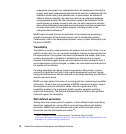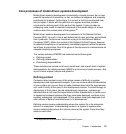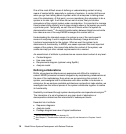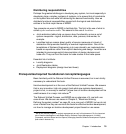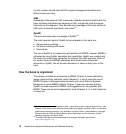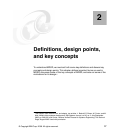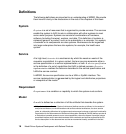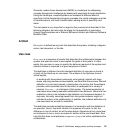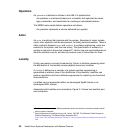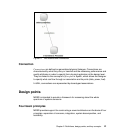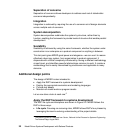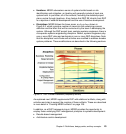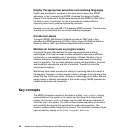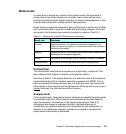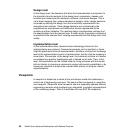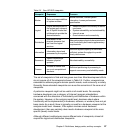
20 Model Driven Systems Development with Rational Products
Operation
An operation is defined as follows in the UML 2.0 specification:
An operation is a behavioral feature of a classifier that specifies the name,
type, parameters, and constraints for invoking an associated behavior.
The MDSD meta model defines operations as follows:
An operation represents a service delivered by a system.
Actor
An actor is anything that interacts with the system. Examples of actors include
users, other systems, and the environment, including time and weather. There is
often confusion between
users and workers. In systems engineering, users are
external to the system, and thus are actors. The specification of workers in a
system is captured in the worker viewpoint
3
—that is, how one would elaborate on
what the workers must do, and how to produce a set of instructions for them.
Locality
Finally, we explain a concept introduced by Cantor to facilitate reasoning about
the distribution of functionality across physical resources, localities.
A
locality is defined as a member of a system partition representing a
generalized or abstract view of the distribution of functionality. Localities can
perform operations and have attributes appropriate for capturing non-functional
characteristics.
4
Localities can be represented either as stereotyped SysML blocks or as
stereotyped UML classes.
Associated with localities are connections. Figure 2-1 shows two localities and
one connection.
3
This document discusses the difference between actors and workers, but does not deal in detail
with the worker viewpoint.
4
Original discussion of localities occurs in M. Cantor, RUP SE: The Rational Unified Process for
Systems Engineering, The Rational Edge, November 2001,
http://www.ibm.com/developerworks/rational/library/content/RationalEdge/archives/nov01.
html



